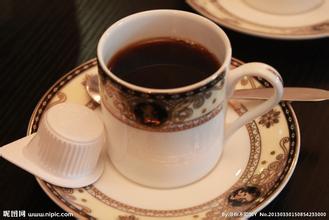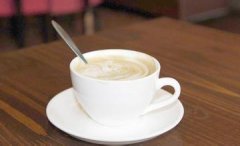A brief introduction to the origin, development, history and culture of Panamanian boutique coffee flowers, butterflies and coffee beans

Cup test results: Apple, Potato, Maple syrup, Lemon Citrus, Coffee blossom, Roasted hazelnuts, Dark chocolate
Fragrance (dried incense): Jasmine, citrus, tea, honey
Aroma: berries, flowers, oils, vanilla, citrus
Flavor: sweet, sour, non-irritating, clean, bergamot, honey, citrus, spices, flowers, berries, tea, cherries, delicate finish, long-lasting aroma, classic jadeite manor Geisha flavor
There are many ways of washing, but generally speaking, the floating beans are removed after the coffee fruit is picked, then the pulp is removed, and then the coffee beans are soaked in a fermentation trough. The enzymes in the water will soften the mucus attached to the peel of the coffee beans. Natural yeast will break down the sugar in the mucus, a process called fermentation. After the fermentation is completed, move the coffee beans to the sun field to dry. In the process of drying, you need to constantly turn the coffee beans to ensure the uniformity of the drying. Finally, the shell is kept in the warehouse, and some raw bean merchants place an order before shelling and bagging. The processed coffee tastes clean, emphasizing bright and lively acidity, as well as clear fruit flavor and floral aroma. What is more surprising is that on the basis of very excellent quality, the very people-friendly price of this coffee bean makes the performance-to-price ratio of this coffee bean. What is special about this coffee bean is that it is made up of three varieties, of which 40% are rosy summer varieties, giving this coffee a distinct rosy summer flavor. According to the information obtained, due to the historical reasons of the manor, in order to pursue yield at that time, the early Rosa varieties were mixed with the coffee trees of Kaddura and Kaduai, and in order to facilitate picking, coffee farmers did not reclassify them, but directly mixed the three varieties. After that, as Rosa rose to fame and the price soared, the processing plant began to carry out fine washing treatment for such a coffee bean. In the land of Pokuit, there is a bean with a high performance-to-price ratio. And it has a very beautiful name-Flower Butterfly. She has 40% high-quality Rosa pedigree, which is composed of Rosa, Kaddura and Kaduai. It is planted in the Baru volcano region of Pokut and grows in the volcanic area at an altitude of 1600 meters. The treatment plant uses fine washing treatment. Panama's special local microclimate leads to abundant rainfall in this area, and a large temperature difference between day and night, coupled with the unique volcanic rock and soil of the volcanic area, as well as meticulous harvesting and fine treatment. It makes this coffee perform well in terms of richness, acidity and floral aroma.
The Baru volcano has an altitude of more than 11400 feet, and the land around it is rich in nutritious and fertile soil, providing sufficient conditions for the sowing and cultivation of coffee endemic to Panama.
The appropriate microclimate, soil, temperature and height of these highlands are suitable for sowing, planting and harvesting a variety of unique coffees. These coffees have jasmine, citrus, ripe fruit, berries, caramel, special sweetness, vanilla, chocolate and other flavors.
Unique coffee
Panamanian coffee is classified and numbered into small batches, which are designed to have a small capacity for optimal management, and classification numbers allow buyers to understand and track the entire process.
Because of its small quantity, Panamanian coffee products are based on special coffee. The country provides its high-quality products to specialized stores around the world, such as Denmark, Britain, Greece, Norway, Sweden, South Korea, Japan, Taiwan Province of China and the United States.
Unlike some other high-priced coffee (such as cat shit, Blue Mountain), the coffee quality of this estate is really up to its price level, although high demand and market factors also play a role. This record-breaking coffee tastes unusual: bright and strong floral and citrus flavors, full of tea. All of this comes from the advantage of "Geisha". The distinction between Panamanian growing areas mainly depends on the sales situation of coffee, but mostly on geographical distribution. In the past, coffee was widely spread, and the following areas are actually one area, but these areas are closely linked.
Boquete
This is the Panamanian region that we are most familiar with. The special mountainous terrain of this area forms a microclimate which is very suitable for growing coffee. Cool weather and frequent fog slow down the ripening process of coffee cherries, and some even say that the climate can already simulate high-altitude planting.
Altitude: 400-1900m
Harvest period: December to March
Planting varieties: Tibica, Kaddura, Kaduai, bourbon, Rosa, San Ramon
Candela volcano
The area produces a lot of food for Panama, as well as excellent coffee. This area borders on Costa Rica.
Altitude: 1200-1600m
Harvest period: December to March
Planting varieties: Tibica, Kaddura, Kaduai, bourbon, Rosa, San Ramon
Renacimiento
Another producing area of Chirqui province, bordering Costa Rica. This producing area is relatively small, so it is not the main producing area of Panamanian boutique coffee.
Altitude: 1100-1500 m
Harvest period: December to March
Planting varieties: Tibica, Kaddura, Kaduai, bourbon, Rosa, San Ramon
Boquete is a high-altitude volcanic area, because the Baru Volcano volcano brings quite fertile soil, towering terrain, cold and humid air, different sunshine, abundant rainfall, and rivers flow through it, creating high-quality Panamanian boutique coffee. This batch of coffee, grown in the same area as the Jade Manor, happens to be located in continuous valleys and ridges, so it forms several microclimates, and the coffee produced in different regions has its own flavor. Refreshing and comfortable citrus feeling, bright pattern-like Nanyang fruit feeling, delicate flower fragrance crisscross exudes a very elegant and generous flavor.
Origin: Pocket, Panama
Co-operative: CASA RUIZ Caesar Louis
Manor: La Berlina Estate Belina
Altitude: 1500-1700
Treatment: washing
Variety: Geisha Rose Summer
Aroma: complex fruit flavors such as mango, apricot, orange, etc.
Palate: cocoa finish, clean, elegant, medium-thick body
Cooking suggestion: hand flushing at 93 °water temperature.
Coffee varieties: Geisha, Catuai, Caturra
Planting altitude: 1400-1700m
Annual rainfall: 3200 mm
Average temperature: about 14-25 ℃
Type of soil: volcanic soil
Grading standard: SHB
Treatment method: washing method
Harvesting method: manual harvesting
Related Certification: NCMA
Raw bean specification: 18 mesh
Harvest year: 2015
Important Notice :
前街咖啡 FrontStreet Coffee has moved to new addredd:
FrontStreet Coffee Address: 315,Donghua East Road,GuangZhou
Tel:020 38364473
- Prev

A brief introduction to the market price of Panamanian boutique coffee bean blossom butterfly manor
In 1925, Canadian fruit merchant Alexander McIntyre (ALEXANDER DUNCAN MACINTYRE), infected by his brother Joseph, came to Poggett to settle down, married ANGELA ROSAS in the same year, bought an estate named LA CAROLINA and began to grow coffee. Their descendants still own the estate and become the most famous coffee in the area.
- Next

Brief introduction of planting location, Climate and altitude in Panamanian Flower Butterfly Coffee Bean Manor
This batch of coffee, grown in the same area as the Jade Manor, happens to be located in continuous valleys and ridges, so it forms several microclimates, and the coffee produced in different regions has its own flavor. Fresh and comfortable citrus feeling, bright flower-like Nanyang fruit feeling, delicate flower aroma interlaced with very elegant and generous flavor Fragrance (dry fragrance): jasmine,
Related
- Detailed explanation of Jadeite planting Land in Panamanian Jadeite Manor introduction to the grading system of Jadeite competitive bidding, Red bid, Green bid and Rose Summer
- Story of Coffee planting in Brenka region of Costa Rica Stonehenge Manor anaerobic heavy honey treatment of flavor mouth
- What's on the barrel of Blue Mountain Coffee beans?
- Can American coffee also pull flowers? How to use hot American style to pull out a good-looking pattern?
- Can you make a cold extract with coffee beans? What is the right proportion for cold-extracted coffee formula?
- Indonesian PWN Gold Mandrine Coffee Origin Features Flavor How to Chong? Mandolin coffee is American.
- A brief introduction to the flavor characteristics of Brazilian yellow bourbon coffee beans
- What is the effect of different water quality on the flavor of cold-extracted coffee? What kind of water is best for brewing coffee?
- Why do you think of Rose Summer whenever you mention Panamanian coffee?
- Introduction to the characteristics of authentic blue mountain coffee bean producing areas? What is the CIB Coffee Authority in Jamaica?

